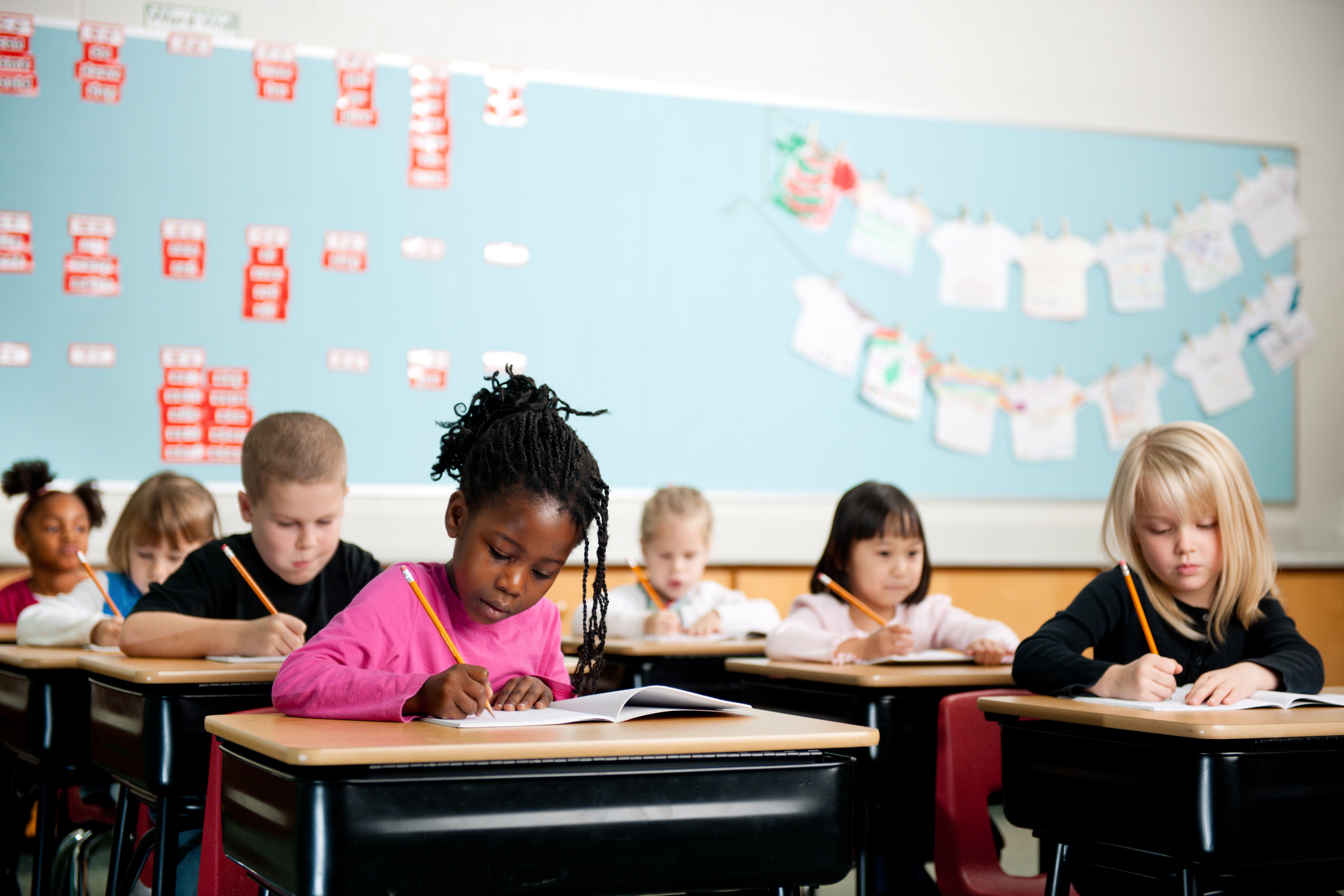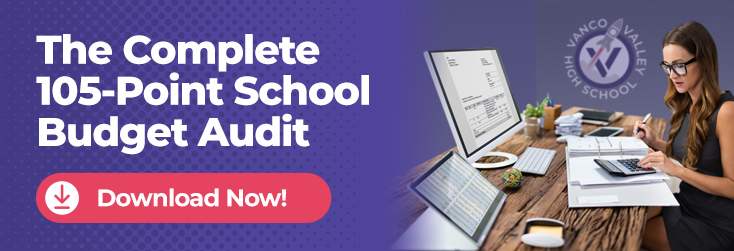
Education is the bedrock of a nation's future, and nowhere is this more evident than in the colossal sums invested in our schools. In the United States alone, the average school budget clocks in at a staggering $19,380 per pupil - that's the second-highest among developed nations! But where does all this money come from and how are school budgets determined?
Think of a school budget as a complex financial puzzle. Each piece - federal grants, state allocations, local property taxes - fits together to form the picture of how resources are allocated across classrooms, libraries and lunchrooms.
Understanding this puzzle is crucial for parents, educators and policymakers alike. It shapes everything from textbooks' quality to extracurricular activities' availability.
This isn't just a dry accounting exercise. Behind the numbers lie crucial questions about equity, opportunity and the very future of our K-12 education.
Are resources distributed fairly across diverse communities? Do high-need schools receive enough support? How can we ensure every child has access to the tools they need to thrive?
Keep reading to learn more about the school budgeting in education process.
Table of Contents
- Introduction: How Are School Budgets Determined?
- Factors Influencing School Budgets
- The School Budget Planning Process
- Challenges in School Budget Allocation
- FAQs
Introduction: How Are School Budgets Determined?
The school sets budgets through a careful process. It considers many factors. Factors considered include some of the following:
- Enrollment
- State and federal policies
- Local property taxes
- Existing expenses and debt obligations
- Special education requirements
- Fundraising efforts
Understanding budgeting education is crucial for parents, educators and community members alike. It provides insight into how schools allocate their resources to meet the needs of students and maintain a high-quality education system.
By understanding school budgets, people can advocate for a fair level of funding. They can make informed choices about education policies. And they can ensure that taxes get used well.
Factors Influencing School Budgets
Several factors determine the resources available for education. Along with state and federal funding, local property taxes are also a key contributor. Here's a closer look at how each affects student funding:
State and Federal Funding
State and federal funding form the bedrock of school budgets, significantly influencing the financial health of educational institutions. Data from the Education Data Initiative shows that the federal government contributes $85.3 billion to K-12 education. This translates to $1,730 in funding per student.
Not to be outdone, states contribute $367.1 billion, translating to $7,430 per student. While these are impressive figures, they fall short of the $16,080 K-12 public schools spend on each learner.
Resources received from the state are often channeled towards essential needs. This includes things like teacher salaries, classroom materials, and facility maintenance. On the other hand, federal funding is designed to address specific educational needs like:
- Special education
- Disadvantaged students
- Bilingual education
However, federal funding comes with guidelines and regulations. It's important to be careful and make sure you follow these rules to use the resources well.
While state and federal funding offer invaluable support, they also present challenges. Changes in politics and the economy can affect how much money is available, making it uncertain for people who plan budgets.
As a school leader, it's important to understand these challenges so that teachers and administrators can work together to support and secure steady funding.
Local Property Taxes
Local property taxes are a crucial funding source for public education at the local level, creating a direct link between residents and their schools. This funding structure, however, varies across regions and countries. In many places, the operation and maintenance of schools heavily rely on the support derived from local property taxes.
As homeowners contribute to property taxes, a designated portion is allocated to the local school district. This financial connection fosters a sense of community investment in education. Potentially increasing community engagement and support for various educational initiatives.
It's essential to recognize that the impact of property taxes can vary. Schools in affluent neighborhoods often benefit from higher tax revenues. Enabling them to fund their schools more effectively.
Conversely, schools in economically disadvantaged areas may struggle to secure sufficient funding, limiting educational opportunities for disadvantaged students.
To address these funding disparities, a strategic approach is necessary. This approach should include community engagement initiatives and the exploration of innovative funding models.
Private Contributions and Grants
Schools often face budget constraints, and private contributions and grants provide additional financial resources. This funding can be used to:
- Enhance educational programs
- Upgrade facilities
- Invest in technology
- Support extracurricular activities
Private Funding
Additionally, private funding makes it easier to implement special programs that may not be covered by standard budgets. This could include initiatives such as STEM (Science, Technology, Engineering, and Mathematics) programs, arts education, sports programs, and more.
Students aren't the only ones who can benefit from private funding can support training programs, workshops, and conferences. This helps educators stay updated with the latest teaching methodologies and technologies.
Tips For Navigating the Philanthropic Landscape
The philanthropic landscape can be delicate, requiring educators and administrators to navigate it with care. However, with the right approach, you can consistently raise funds from grants and donors to ensure school programs run smoothly.
One of the major downsides with donor or grant funding is that it's not assured in the next fiscal year. To overcome this challenge, consider cultivating meaningful relationships with the philanthropic organizations that support your school.
Instead of viewing them as a cash source you only approach when funds are needed, treat them as a partner. Go beyond giving them recognition for the donation by involving them as much as you can. This includes sending them reports of the impact their dollars have made in the lives of students
By building meaningful, long-term partnerships you increase the likelihood of sustained support and collaboration. Further benefiting the school over an extended period.
As you know, getting grants isn't always easy. The application process is tricky, and they carefully check why you deserve funding compared to others. Any mistake in your application can disqualify you.
To avoid this, pay attention to details and create a strong presentation about your education goals. This will improve your chances of getting the grant.
Economic Downturns and Budget Cuts
Economic downturns and budget cuts can have significant and adverse effects on schools at various levels. Impacting students, teachers, and the overall education system.
During tough economic times, issues such as unemployment and reduced spending power arise. In turn, these translate to reduced tax revenues, limiting the government's funding for education. When this happens, you'll face tough decisions on resource allocation, staff retention, and program viability.
With regards to budget cuts resulting from economic downturns, here are some strategies you can use:
- Prioritize spending on essential resources such as classroom materials, textbooks, and technology that directly impact student learning
- Collaborate with parent-teacher associations, community leaders, and advocacy groups to advocate for increased education funding at the local and state levels
- Explore fundraising activities and events organized by the school community to generate additional revenue
- Embrace cost-effective and open-source technologies to enhance teaching and learning experiences
Brief Overview of the Importance of Understanding School Budgeting
School budgets determine how funds are allocated for various aspects of education, such as:
- Teacher salaries
- Instructional materials
- Technology upgrades
- Extracurricular activities
- Facility maintenance
Without understanding education budgets, it is hard to see the financial constraints faced by schools. And, the impact on classroom instruction is also hard to see.
Also, knowing about the school budgeting process lets stakeholders see disparities. These may be between districts or within a district.
This awareness helps find areas needing support. It also shows where resources are not fairly spread to all students.
Understanding budgeting in education is also essential when evaluating the success or failure of certain educational programs or initiatives. Over time, policymakers can examine how money was allocated and track its impact on student achievement. This data can help them make decisions that improve education and use limited resources well.
Finally, knowing about school budgets empowers parents. They can then engage with their child's education better.
They can join discussions about resource allocation at parent-teacher meetings. Or, they can join local advocacy groups. These groups focus on improving funding equity at both state and local levels.
Factors Influencing School Budgets
When determining school budgets, several key factors come into play. These factors can greatly impact school funding. They shape the opportunities given to students.
State and Federal Funding
State and federal funding play a crucial role in determining school budgets. The funds are key. They provide the resources schools need to work well and to give students a good education. Let's take a closer look at how state and federal funding impact school budgets.
State funding is typically allocated based on various factors, such as:
- Enrollment numbers
- Student needs
- District wealth
Each state has its own formula for distributing these funds among its districts. The goal is to ensure that every student gets a fair education. This should be true regardless of their location or wealth.
Federal funding supplements state funding by providing additional resources specifically aimed at supporting:
- Disadvantaged students
- English language learners
- Special education programs
- Other targeted initiatives
This funding helps bridge the gap between what states can provide and what schools need to meet the diverse needs of their students.
However, it's important to note that state and federal funds often have restrictions or requirements. Schools must follow these when using the money.
This ensures accountability. It also ensures transparency in how taxpayer dollars get spent on education.
Fluctuations in both state and federal budgets can also directly impact school finances. During economic downturns or higher-level budget cuts, schools may get less funding.
This can lead to tough choices. They may involve staff layoffs, program cutbacks or bigger class sizes. All of these affect the education provided.
In some cases, states may use policies like revenue sharing. These policies have redistributive formulas. They aim to reduce funding disparities across the districts they govern.
But, challenges remain in achieving true fairness in education across regions. This can be addressed with education policy.
Local Property Taxes and Their Impact
The government levies these taxes on properties within a specific geographic area. They contribute to the overall revenue of the school district. But how exactly do local property taxes impact school budgets?
Local property taxes provide a stable source of funding for schools. Homeowners pay annual property tax bills. A portion of that money then goes directly to fund education in their community. This reliable revenue stream allows schools to plan and budget more confidently.
The amount of money collected through local property taxes can vary widely from one district to another. Some areas have higher home values or more businesses. They make more tax revenue than areas with lower home values or fewer businesses.
This creates funding disparities between districts. They can affect the resources and opportunities available to students.
Real estate market fluctuations can impact the revenue generated through local property taxes. During a downturn or recession, when housing prices decline, tax collection may drop. This happens as properties lose value.
This reduction in funds can pose challenges for school districts already operating on tight budgets. In some cases, communities may also vote on extra levies or bond measures to further support their schools.
These extra contributions can help bridge financial gaps. They fund specific projects, like building renovations or technology upgrades. These projects would not be possible within the regular budget.
However, it's worth noting that relying solely on local property taxes for school funding has its drawbacks. It often perpetuates educational inequalities.
Private Contributions and Grants
By using private contributions and grants well, schools can add to their budgets. They can go beyond what is from state funding or local property taxes alone.
These external funders can give much-needed resources. The resources will improve programs and support initiatives in schools.
People often make private contributions from individuals, businesses and foundations. They do so with the goal of supporting specific areas of education or needs within a school community.
These donations can be financial. They can also be the gift of equipment or technology. They can even be volunteer hours.
Grants are another avenue through which schools can secure additional funding. The grants may be from governments, non-profits, or corporations. They're used to promote education and improve student population funding and, ultimately, outcomes.
Private contributions and grants can vary a lot. This depends on factors such as the size and location of the school district. It also depends on the priorities of potential donors or grant providers.
School administrators often seek chances for private contributions and grants. They do this by networking with local businesses, reaching out to alumni associations or applying for grant programs.
It is key to note that while gifts and grants can help schools, they are not a stable source of funding over time. Schools must manage these funds well. They must align with their goals while also following any restrictions from donors or grant providers.
Economic Downturns and Budget Cuts
During times of economic downturn, schools often face the harsh reality of budget cuts. These cuts can significantly hurt education. They harm resources, programs and staffing.
Let's take an in-depth look at how economic downturns affect school budgets.
It's important to understand that school budgets heavily rely on funding from different sources. However, falling tax collections and other financial challenges can hurt government revenues. This can lead to reduced school funding.
As a result, schools are forced to make tough decisions regarding their budget allocations. They may be required to cut expenses in areas such as technology upgrades or facility improvements.
Also, schools may need to cut staff. They might lay off teachers or cut support positions.
Budget cuts can also reduce access to extracurricular activities. They can also cut educational programs for students.
Schools might have to cut sports teams or arts programs. This is due to limited funds for buying equipment and hiring instructors.
Budget reductions can also adversely impact special education services provided by schools. Budget cuts cause resource constraints. Students with disabilities may not get the support they need.
Unfortunately, the cuts hurt disadvantaged communities the most. They rely heavily on public schools.
These communities already face many socioeconomic challenges. These challenges hinder education for their children. Limited access, caused by shrinking budgets, worsens this issue.
The School Budget Planning Process
The school budget planning process can sometimes feel like a complex puzzle with many moving parts. However, understanding this process is crucial for anyone interested in determining school budgets. So, let's dive into the steps involved and shed some light on this important aspect of education funding.
Steps Involved in Creating a School Budget
Creating a school budget is no small task. It involves careful planning, collaboration and decision-making. This helps to ensure that the needs of students, teachers and staff are met while maximizing available resources. Here's an inside look at the steps involved in creating a school budget.
Gathering Accurate Financial Data
This includes reviewing the following through a school audit checklist:
- Previous budgets
- Expenditure reports
- Enrollment numbers
- Any other relevant financial information
Administrators can see their financial situation clearly by studying past spending patterns. They should also look at projected costs for the upcoming year.
Set Priorities and Goals
Once the necessary data has been collected, it's time to set priorities and goals for the budget.
School administrators work with principals and department heads. They do this to find areas needing more funding or where they can cut costs without harming education quality.
Estimating Revenues
This involves projecting income from various sources. This can include:
- State funding allocations
- Federal grants
- Local property taxes
- Fundraising efforts
- Any other potential revenue streams specific to the school district
Accurate revenue projections are essential. They show how much money will be available for programs or initiatives.
Expense Forecasting
Expense forecasting requires balancing competing needs while ensuring compliance with legal requirements. During this step, it's determined how much money needs to be allocated to different categories.
This can include the following and more:
- Personnel salaries and benefits
- Instructional materials
- Technology upgrades
- Facility maintenance
- Transportation services
- Extracurricular activities
- Special education support services
Considering Different Factors
We have revenue estimates. We also have expense forecasts from departments within schools (like principals). It's time for all stakeholders to discuss trade-offs.
Which programs should receive increased funding? Which ones might have their budgets reduced?
Proposed Budget Plan
Finally, everything culminates in presenting a proposed budget plan to relevant governing bodies. This can include school boards or districts' superintendents. They review it before making final decisions to approve or modify it. This process often has public hearings.
At these, community members can give input and voice their concerns or support for specific budget items.
The Role of School Principals and District Boards in Budget Planning
School principals and district boards play a vital part in the decision-making process. They must consider the needs of students and staff. They must do this while working within the limits of available funding.
School principals have an intimate understanding of their school's specific needs. They work closely with teachers, staff and parents to identify areas where additional resources may be required.
This can include the following and more:
- Updated technology
- Extracurricular programs
- Hiring more staff
The principal acts as an advocate for the needs of the school during budget discussions.
District boards also play a significant role in budget planning. The boards are elected officials. They represent the community's interests. The boards oversee financial decisions at a broader level.
They review proposals from principals and others. They consider factors such as enrollment, demographics and growth.
Collaboration between principals and district boards is essential throughout the budget planning process. Principals present their recommendations based on their schools' needs. This ensures that the district considers their needs when deciding funding.
Board members evaluate these proposals. They do this alongside other competing priorities at multiple schools in the district before finalizing budgets.
Additionally, both principals and board members must consider state regulations regarding education funding allocations. These rules often say how funds can be used. They cover different purposes, like materials for teaching or upgrades to facilities.
Challenges in School Budget Allocation
Ensuring that school budgets are allocated fairly and effectively is no small task. There are many challenges. They arise when deciding how to divide funds among schools and districts.
Disparities in Funding Across Districts
Disparities in funding across districts can significantly impact the quality of education that students receive. Unfortunately, not all school districts are created equal when it comes to financial resources.
This means some schools may have more money. They can use it for things like technology, clubs and teacher pay. In contrast, others struggle to provide even the basic necessities.
One factor that contributes to these disparities is the reliance on local property taxes for funding. Districts with high property values often generate more tax revenue. This allows them to invest more in their schools.
On the other hand, districts with lower property values may struggle to raise enough funds through property taxes alone.
Another contributing factor is state funding formulas. Each state has its own formula for distributing funds among school districts.
However, these formulas can vary widely in terms of how they account for factors such as student population needs and district wealth. As a result, some districts receive more state aid than others based on their unique circumstances.
Disparities in funding can lead to unequal opportunities for students from different backgrounds. Wealthier districts are able to offer a wider range of academic and extracurricular programs. These enhance educational experiences and college readiness.
Meanwhile, poor districts may need to cut vital programs. Or they may have to increase class sizes due to lack of funds. Addressing these disparities requires comprehensive reform at both the state and federal levels.
Impact of Socioeconomic Factors on Funding
Socioeconomic factors play a big role in determining school funding. They also shape the education of students across the country.
These factors include many economic and social indicators. They can profoundly impact school funding.
One key socioeconomic factor is poverty levels within a school district.
Schools located in economically disadvantaged areas often face additional challenges. They may lack access to resources and struggle with lower academic performance.
To fix this gap, some states have created funding formulas. These give more money to school districts with higher poverty rates.
Another factor is the tax base of a community. School budgets heavily rely on local property taxes. This means that communities with higher property values tend to generate more revenue for their schools.
This can create disparities between wealthy and low-income neighborhoods. Ultimately, this leads to unequal distribution of funding and opportunities for students.
The racial composition of a district also plays a role in funding allocation. Historically marginalized communities may face systemic inequities. These result states providing in less money to schools.
Efforts at both state and federal levels aim to address these disparities. They do so through initiatives to promote equity in education.
The overall economic health of an area also affects school budgets. During downturns or recessions, tax revenues decrease. This puts pressure on schools to make budget cuts. Unfortunately, these cuts often impact programs and services vital to student success.
It's important to see how socioeconomic factors and school funding are connected. It shows the need for fair distribution of resources in education.

FAQs
Do you still have more questions? We've compiled a clear and concise collection of FAQs that answer your most pressing questions about school funding.
How Do Local Property Taxes Affect School Budgets?
Local property taxes play a crucial role in determining school budgets. These taxes, collected by local governments, are based on the assessed value of properties within the community. The revenue generated from these property taxes is then allocated to various public services, including education.
One way local property taxes impact school budgets is through their contribution to funding sources. In many states, property tax revenues form a significant portion of the overall budget for schools.
Funding amounts depend on the taxable value of properties. This is true for a specific district or municipality.
The allocation of funds comes from local property taxes. It can help or hurt school budgets. Wealthy districts get more funding per student.
This is compared to poor ones. This gap can lead to unequal resources and opportunities for students in different communities.
Additionally, fluctuations in property values can also influence school budgets. Property values drop due to economic downturns or housing market instability. This drop also decreases the revenue from local property taxes.
The funding cut makes it hard for schools to keep their current programs and services. Forcing schools to make cuts elsewhere.
But, growing districts see more tax revenue. The growth comes from new developments or higher property values.
This extra funding lets schools invest in infrastructure. They can also hire more teachers and support staff. And, they can get better resources for students.
Local property taxes are important for school funding. But, relying only on them has raised equity concerns. This is because districts vary in socioeconomic status.
Wealthier areas often have pricier properties. So, they generate more tax revenue per person than poor neighborhoods. Thus, the system widens the gap between rich and poor districts.
What Role Does the State Government Play in School Funding?
State governments play a big role. They decide how funds are distributed to schools and districts.
State governments allocate a portion of their budget towards education. This includes funding for some of the following:
- Salaries
- Instructional materials
- Facilities maintenance
- Other essential resources needed by schools
The amount allocated varies from state to state. It's based on factors such as population size, tax revenue and educational priorities.
States set funding formulas or guidelines. These decide how much money each school district gets. These formulas take into account various factors, such as:
- Student enrollment numbers
- Special needs populations
- English language learners (ELL)
- Poverty rates within specific districts
States aim to distribute funds fairly among districts with differing needs. They do this by considering these factors.
Additionally, the state government often sets standards for teacher salaries and benefits. They may also provide grants or incentives.
These are for recruiting highly qualified teachers. They are for areas where there is a shortage of educators. This helps attract talented individuals who can positively impact students' learning experiences.
The state government also plays an oversight role in monitoring the financial health of local school districts. They ensure that budgets are managed well. They also ensure that taxpayer dollars are used well.
How Are School Budgets Impacted During Economic Downturns?
Economic downturns can significantly impact school budgets. They affect everything from teacher ratios and salaries to classroom resources. When the economy takes a hit and revenue decreases, schools are often faced with tough decisions about where to cut spending.
During an economic downturn, state funding for education is one of the first areas affected.
During this time, tax revenues have decreased. States have budget deficits. They may cut education funding or make across-the-board cuts in all departments.
This reduction in funding trickles down to individual school districts. It forces them to make difficult choices regarding staffing levels and program offerings.
Local property taxes also play a crucial role in school funding during an economic downturn. Property values decrease due to market fluctuations or foreclosures. Tax revenues from those properties decline too.
This means less money available for schools from local sources, further straining their budgets.
Private contributions and grants are another area impacted by economic downturns. People and companies may be less likely to donate or provide support during uncertain times.
Also, grant funding may get harder to win. Organizations are tightening their belts during an economic crisis.
The ripple effects of an economic downturn extend beyond just monetary factors. They can also affect student enrollment rates.
Families facing money problems may move out of the district. They might also choose homeschooling or charter schools.
Enrollment changes can shift per-pupil funding formulas used by states. This can impact school budgets.
Allocating funds is hard in a downturn. It's even harder when considering gaps between high-wealth and low-wealth districts.
Schools located in economically disadvantaged areas often rely heavily on state aid. They face greater difficulties when state funds are reduced due to budget constraints caused by an economic recession.
What Is the Process of School Budget Approval?
The school budget approval process is a crucial step. It ensures the effective allocation of resources for educational institutions.
There are several stages involved in this process. In addition, it requires input from various stakeholders to ensure transparency and accountability.
Budget planning begins with assessing the previous year's expenses, revenues and anticipated changes or challenges. This helps in determining a baseline for future budget discussions.
Next, school administrators collaborate with principals, teachers and staff members to identify their needs and priorities for the upcoming year. This may include funding for instructional materials, technology upgrades, professional development opportunities, or facility improvements.
Once these priorities are set, district boards or finance committees review the budget. They carefully examine each line item to ensure it aligns with state regulations and local policies. Any adjustments or revisions may be made at this stage based on available funding sources.
After the team finishes their review, they revise the report. Then, they hold public hearings to get feedback from parents, the community and other stakeholders.
These hearings provide an opportunity for open dialogue about the proposed budget before final decisions are made.
Following public input sessions comes the finalization phase. During this district boards vote on approving the budget. This decision takes into account all relevant factors. This can include the following:
- Student enrollment numbers
- Projected revenues (including state funding)
- Expected costs (such as salaries)
- Any unforeseen circumstances that may impact finances
How Do School Budgets Vary Across Different States?
School budgets play a critical role in ensuring that schools have the necessary resources to provide quality education. However, these budgets can vary significantly across different states. Let's take a closer look at how school budgets differ from state to state.
One factor that influences school budgets is the overall funding each state government provides. Some states allocate more funds towards education, resulting in larger school budgets. This allows schools to invest in better facilities, technology and educational programs for students.
Another aspect affecting school budget variations is each state's local property tax revenue. States with higher property values and tax rates tend to have more robust funding for schools.
Conversely, states with lower property values may struggle to generate sufficient revenue. This leads to smaller budgets for schools.
Private contributions and grants also contribute to varying school budgets across states. Some states may have a higher number of private donors or organizations willing to support their local schools financially. This additional funding can supplement the existing budget and provide extra resources for students.
Economic downturns can further impact school budget allocations differently across states. During times of financial strain, some states may be able to maintain stable or increased funding levels through careful planning and prioritization. However, other states facing severe economic challenges might experience significant cuts in their education budgets.
The process of approving school budgets varies from state to state as well. Each state has its own set of regulations and procedures governing the budget approval process. This can influence how much input individual stakeholders, like educators and parents, have in shaping the final budget.
Begin Your Journey to Financial Excellence with Our School Budget Template!
Every great financial strategy starts with a solid plan. Our free template is your first step towards a more organized, effective budget. Don't just plan; excel with our expertly developed resource.

















